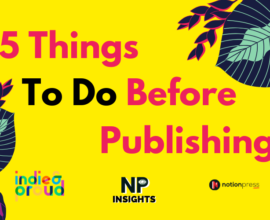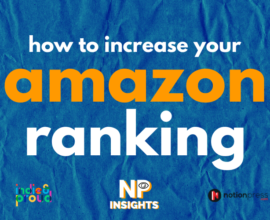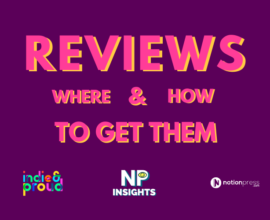Why and How to create a Writing Portfolio
As we know, promoting our book in the market is crucial in self-publishing. It requires us to come up with new, unique, and creative ways to take our book to the masses. One unique way we’re going to venture into and reap benefits is through portfolios. For the uninitiated, create a Writing portfolios are compilations of an artist or a creator’s best works that reflect his or her talent. Artists, models, and photographers usually have a portfolio to present their best works to their prospective employers, followers, and clients. As a writer, our clients are our readers and it is essential that we impress them to buy our book through works we’ve written earlier. Creating portfolios also means we’re building a strong reader base and an online presence for our brand as an author.
What is Writers Portfolio, anyway?
A writing portfolio is a compilation of all your best works. It is the go-to place for your readers and followers to have a look at your work and get to know your writing skills. It can be a collection of articles you’ve written for a blog/website, press releases, magazine or newspaper submissions, and anything that is solidly credible (facebook posts don’t count). As a writer, you need to show your skills to the world and in the best ways possible. Having a portfolio is one of the ways.
How different is it from your Blog?
Blogs are something that you own to write about things that captivate you, upset you, and influence you. It is something that you do out of passion. But having a portfolio is more inclined towards being professional in what you do. Not all posts that you post on your blog can be part of your portfolio as people tend to be judgmental when it comes to viewing portfolios. Also, you wouldn’t be having an interaction with readers and followers through your portfolio (that will happen on blogs). All you will be doing is allowing people to access your portfolio and read some of your best content.
Since this is the digital age, it will be ridiculous to create a paper-clip-and-file based portfolio. So, we will see in this article some tips on creating a writer’s portfolio using some of the simple and easy-to-use tools and services available online.
But why do you need a Writer Portfolio?
There are a lot of pros of creating a portfolio and we’ve explained them for better comprehension:
To Market your Book:
Having a portfolio simplifies the process of marketing your book manifold. When the reach of your portfolio is quite commendable, it enables you to easily reach to your readers easily. When you create one, you’re increasing the chances for you to say more about your book, gaining new readers, and making it sell. You can use your portfolio to talk things about your book that you haven’t shared anywhere else.
To get Readers Attention
When your book finds its place on your portfolio, readers automatically start thinking if they need to buy your book. So, to clear the hesitation off their minds and make them take an action, what will be helpful is your collection of work on your portfolio. When they read other articles, posts, and content you’ve written and they like your style (and your book’s content), they will easily click on that purchase option.
To Flaunt off your Writing Skills
Artists have a portfolio to showcase their designs, developers have websites they’ve built to flaunt their skills, and architects have buildings under their credits to quote their work. As writers, you need a platform to flaunt your skills and be proud of it. So, having a writer’s portfolio helps!
Parts of a Portfolio
To create an effective portfolio, you need to add two powerful aspects to it’s an awesome bio/about me page that people will first look at and the posts that you intend to display on your portfolio. Now let’s see how we can create an effective portfolio using the simplest content management systems out there WordPress.
Creating a Portfolio
- WordPress offers one of the best and the easiest ways to create a portfolio. Plus, it’s free. So, to create one, go to WordPress website and click on the option Start a Blog.
- When you click, you will be taken to a page that will show additional information on the pros of starting a blog. Scroll down and select Get started to begin the process.
- On the next page, you will be asked to key in your email address and a password along with user name to create an account. Next, you will be asked to specify the name for your blog. Choose something creatively that has your name on it. On selecting, click on the option Create My Account. Now, your portfolio URL would read something like – XYZportfolio.wordpress.com
- On the next page, WordPress will tell you if the name’s already taken or if it’s available. If the name you intend to use for your portfolio is unavailable, create a new one. If not, proceed to selecting the plans.
- The next page will suggest you some of the subscription plans you can use for your page. If you are willing to invest on getting more services from WordPress, you can choose a plan accordingly. Otherwise, just select the basic, free plan.
- The next step will be to choose an appropriate theme for your portfolio. One of the advantages with this management system is that it offers a lot of template themes for free. Select one that is professional yet elegant and proceed to the next.
- Now you need to create the About me page with all interesting information about yourself. This is the page that will give readers first-hand information about you and your portfolio. So, come up with captivating piece of paragraph about yourself and add additional columns like links to your blog, your articles online, your social media profiles, and also your contact details (more on this later).
- Once you’ve done this, it is time for you to make this page static, wherein the About Me page will be the landing page for your readers when they access your portfolio link. It is from here that people will be able to navigate to other sections of your portfolio. So, to make this page static, go to the appearance section of your dashboard and select the option Customize.
- There, you’ll find an option called static front page. Click on the arrow you find there and select the About page. This will make the About me page the homepage for your blog.
- Next is to create several additional pages for your blog so you can categorize your content and display them accordingly. To create pages, come back to your dashboard and select the Pages tab. When you hover your mouse over it, the website will automatically display options from which you need to select add new pages.
- Depending on the diversity of content you’ve written so far and those of which you wish to display on your portfolio, create pages accordingly. There may be pages like short-fiction, poems, scripts, plays, articles, magazine submissions, ebooks you’ve published, books that are to be released, and the likes.
- Now, compile content under each, upload them, and save them as drafts. Do not publish your portfolio until everything is perfect.
With that, all the technical aspects of creating a portfolio are done. Now, the work will be to make the portfolio more organized, professional, and captivating. For that, we will look at some of the best practices to maintain a portfolio.
Maintaining your Portfolio
This is the phase where a lot of questions will pop up in your mind like how many pieces of content should you include, which one to include, which one to overlook, and the likes. So, to start off, understand that you shouldn’t include all that you’ve ever written on your portfolio because that would make it a backup and not a portfolio. Your portfolio should be precise and focused. Your compilation should entice a new reader to read more of your works and your followers to read your book. Add content that will add value to what you did as a writer so far and not just something that will fill pages on your portfolio. That means you cannot go about mentioning the reviews you write on Flipkart or status updates you post on Facebook.
Add two articles or posts under each category you’ve come up with so you can let your readers know about your versatility in writing. If you don’t have enough content, pen them down specifically for portfolio purpose. Also, when uploading, consider each category a portfolio by itself. Display the post first which you think is best in that category followed by other posts.
Create a separate page for your book(s) and add information about your book such as the blurb, an image of your book’s cover, and some interesting snippets about what inspired with your story, and add a link to your book’s landing page in the end (it could be a social media page or your book’s sales page). This will allow people to take an instant action concerning your book like they can instantly check out reviews about your book or make a purchase as well. Remember that sales of your book is not the purpose here but it is to let people know that the book is another feather in your hat.
Best Practices for the Bio/About Me Section
The Bio/About Me section should be very precise and serve its purpose. Do not go overboard in adding too many pieces of information that are not interrelated. Remember that the bio/about me section is a pitch about yourself, what you’ve done, and what you’re capable of. Add details like your name, a quirky one-liner about yourself, a full-length paragraph on who you are and what you’ve done, links to your social media profile, blogs, about.me page, medium profile, and other online platforms. If your blog is popular, display in numeric the total number of posts you’ve written, the number of feedback and comments you’ve received, and some vital stats about your blog.
As far as language is concerned, you don’t have to be too professional and use language that you would on your sum. Be casual; be quirky. Check for grammar, punctuation, and language and eliminate all errors. You don’t want to create a bad first impression, do you? What you need not add is your age because you’re not looking for any job or alliance for marriage and also steer away from clich such as thinker by the day, writer by the night; gifted writer, and other sugarcoated adjectives. Come up ones that truly reflect your intentions.
Once your portfolio is ready and fit to be published, click on that publish button and let the world see it. Next, go to your social media profiles and add a link to your portfolio on your profiles so your followers and readers can access the link. Go to content sharing websites such as Pinterest, Digg, Reddit, and the likes and share your portfolio for further visibility.
Remember that there are thousands of unique ways in which you can approach book marketing and promotion. Creating a portfolio is one amongst the many ways and channels you can use to promote your book and build your online presence. The portfolio you create will not only help you market your book better but also serve as a channel you can resort to if you decide to freelance, look for a full-time career in writing, or fetch a job.





